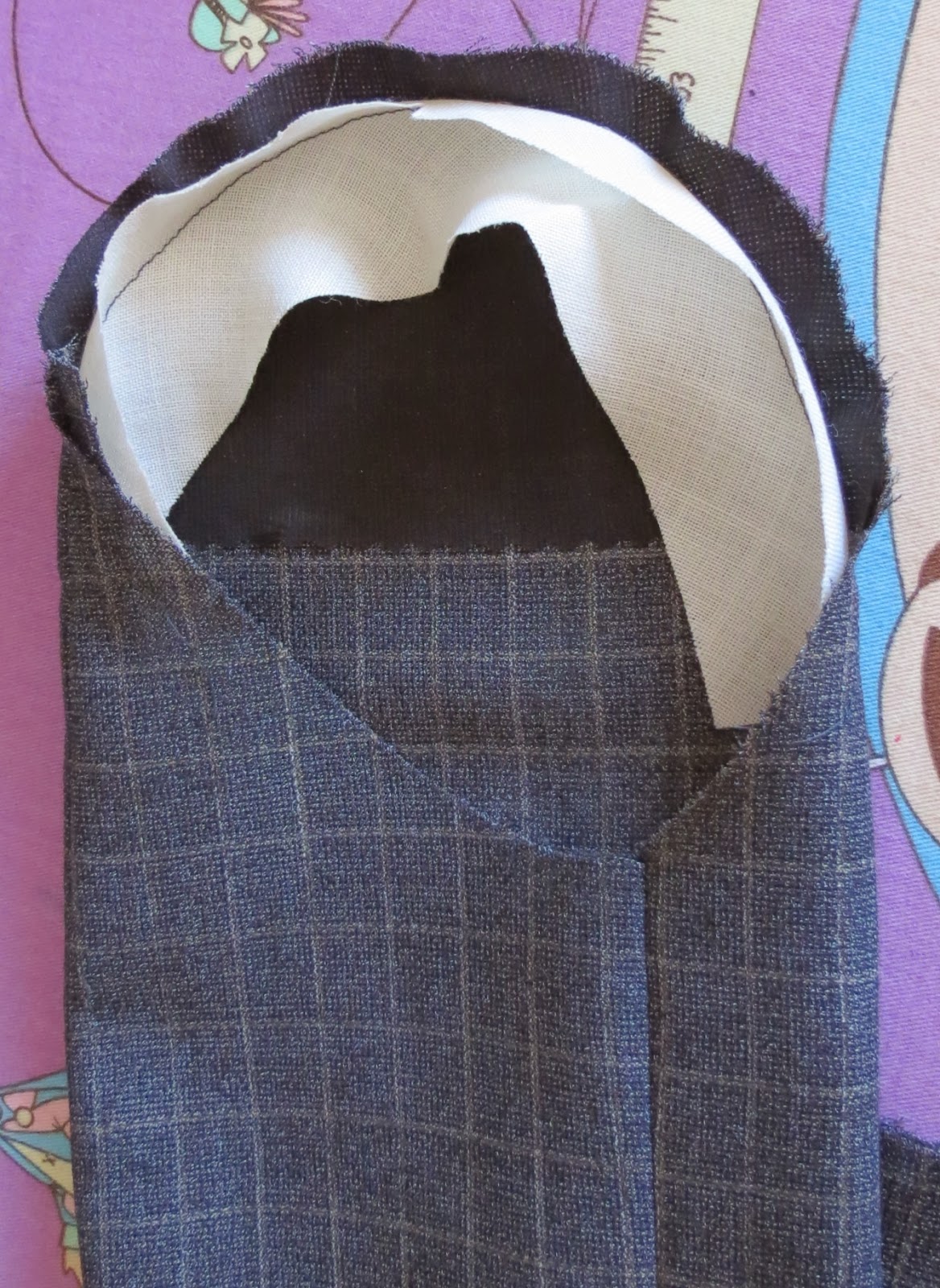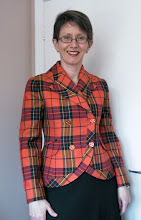I don't think so.
 The geometry is simple. Imagine that the boxes in the diagram at left are a small check pattern in a woven fabric. The sloped sleeve cap seam line within one rectangle in this checked pattern (line A) is slightly longer than the more vertical line of the armscye seam line in the same sized rectangle (line B) even though they both cover the same vertical distance.
The geometry is simple. Imagine that the boxes in the diagram at left are a small check pattern in a woven fabric. The sloped sleeve cap seam line within one rectangle in this checked pattern (line A) is slightly longer than the more vertical line of the armscye seam line in the same sized rectangle (line B) even though they both cover the same vertical distance.The sleeve cap seam line must be made shorter (eased) so that the horizontal lines in the check can match in the finished garment. If there was no ease at all, the stripes would not match because the distances between them along the seam lines in the two differently-shaped pieces are different!
(Sorry for the klutzy diagram; someone equipped this struggling neophyte with a vector drawing app.)
The proof of my theory is that I can ease a sleeve into an armscye and yet match the horizontal stripes perfectly (or as close to perfectly as matters based on the six foot rule).
True enough, you don't need a lot of ease. But you have to have some to match horizontal lines in a checked woven between the garment body and sleeve cap. Happily, Burda 7576 seems to have just the right amount of sleeve cap ease.
 I basted the sleeves of my muslin on the jacket body and then marked them up to assist in placing the pattern piece on my fabric, in much the same way I did in this post.
I basted the sleeves of my muslin on the jacket body and then marked them up to assist in placing the pattern piece on my fabric, in much the same way I did in this post.Once cut out of the fashion fabric, the sleeve cap is supported with a lightweight fusible interfacing, and eased using a bias-cut strip of wool.
The verdict? The horizontal matching is pretty good, but I still haven't figured out the vertical. Close though...




I don't know about the geometry, but it is a fact that matching stripes and plaids will make you a little nuts. I've been up at 3 a.m. sometimes thinking about getting plaids into armscyes. Looks like you did a great job!
ReplyDeleteI was looking at how people's plaid, checks and stripes were Iined up the last week or so. It is horrible. Most people are walking around unmatched. It is very unnerving. I think I'm suffering from too much sewing. I like your explanation. I mostly worry about the horizontal at the bottom of the sleeve cap and the vertical at center of the top of the cap.
ReplyDeleteGeometry is everything, but don't let that put anyone off! Beautiful work matching the checks on your jacket. :)
ReplyDeleteExcellent explanation! Thank you! And nice sleeve, too.
ReplyDeleteSleeve cap ease is NOT bogus. Maybe in the world of RTW manufacturing that is a true statement, but there is more to sewing that what is done on the factory floor. There are also anatomical situations requiring more ease than is commonly seen in RTW and I have discussed that with her. Her reaction was, "I was talking about most of the time". But that wouldn't make as compelling an argument, would it. The older I get the less likely I am to state anything in black and white. Too often there is a lot of reality lurking in the gray area between. Easing, along with steam & heat, is an oft-used technique in traditional tailoring and couture.
ReplyDeleteI learned that bias strip trick and used it on my first jacket. Very cool stuff :)
ReplyDeleteTrying again, comment seems to be lost in cyberspace...
ReplyDeleteBeautiful matching of the plaids. It's things like this that make it perfect.
It is looking beautiful. And glad to hear sleeve cap ease is not completely bogus - one less thing for me to stress about not understanding properly :)
ReplyDeleteThanks for a thought provoking post. What lovely sewing, and what an improvement over the first shot at the muslin. Wondeful.
ReplyDeleteAn elegant proof - and nicely drawn, to boot! As "a little sewing" stated above, molding is a traditional way to generate curves from a flat piece. without using darts. One really must have a little ease in the sleeve to go over the deltoid, too, unless the shoulder seam goes way out and the wearer has twig arms. I am really admiring your jacket.
ReplyDelete